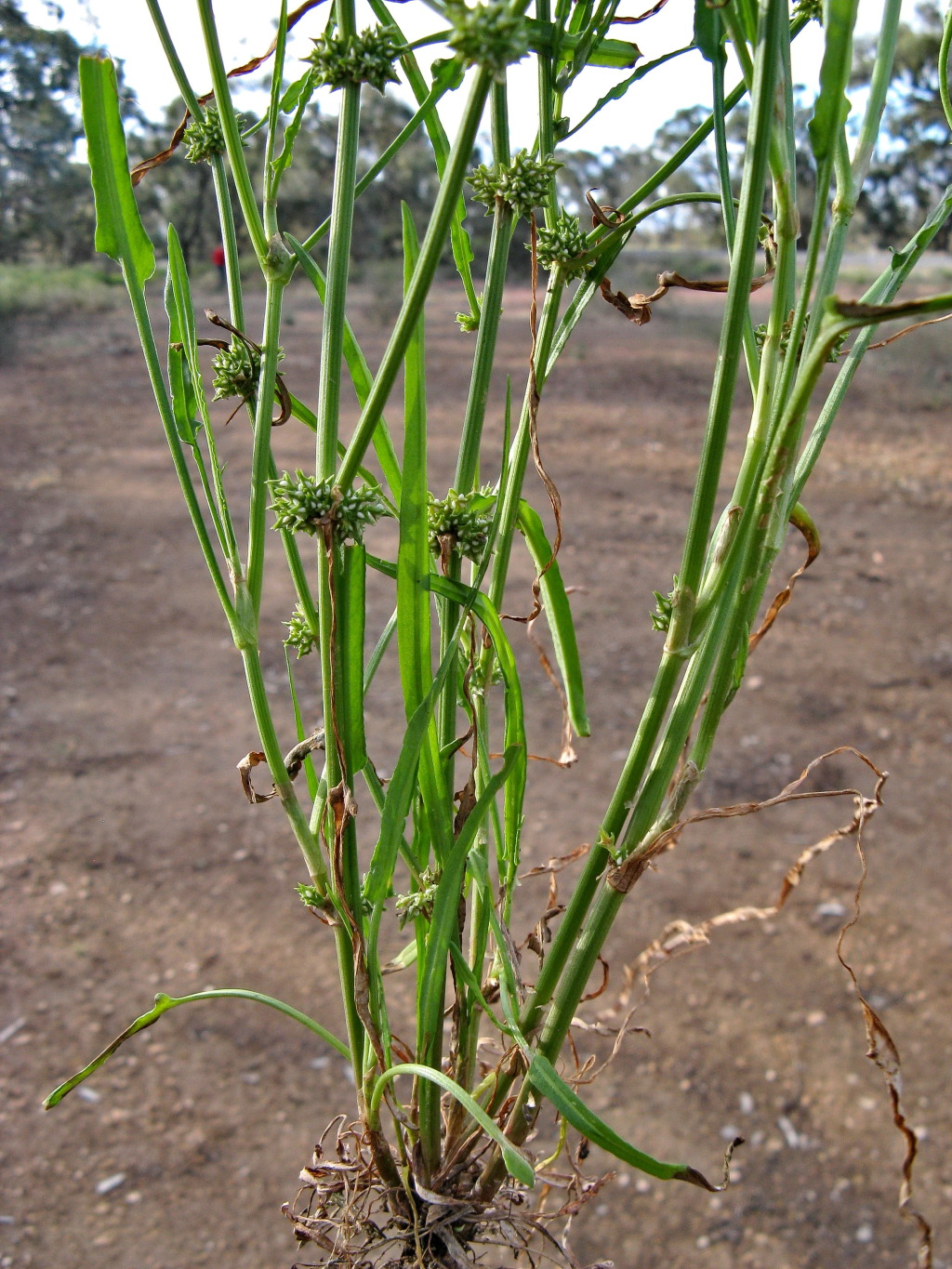Rumex tenax
Rech.f. Narrow-leaf DockPerennial with 1–several erect, simple or narrowly to somewhat divaricately branched stems to c. 50 cm high. Petioles of basal leaves shorter than or subequal to lamina; lamina linear to oblong, 8–16 cm long, 3–5 mm wide (occasionally the bases dilated to c. 1 cm wide), truncate or broad-cuneate at base; margins flat or minutely crisped; upper leaves smaller, very narrow, and more or less sessile. Inflorescence to c. 40 cm long, 20 cm wide; flower 'whorls' mostly 1–5 cm apart, many-flowered, each subtended by a leaf. Fruiting valves c. triangular, 2.5–4 mm long, c. 1.5 mm wide (excluding teeth), reticulate-foveate, 1–2-toothed near base; callosities present on each valve, to c. half as long as valve; fruiting pedicel subequal to valves, often slightly swollen just below fruit, jointed near base. Nut 1.5–2 mm long. Flowers Sep.–Jan.
LoM, MuM, Wim, GleP, VVP, VRiv, MSB, RobP, MuF, GipP, OtP, Gold, NIS, HSF. Also WA, SA, Qld, NSW. Occasional on seasonally flooded or winter-wet clayey soils in northern Victoria (particularly along the Murray River floodplain), with a remarkably disjunct occurrence at Laverton, just west of Melbourne.
Hybridizes with R. brownii. Although Rechinger (1984) describes the fruiting valves of R. tenax as having a single tooth on each margin, numerous specimens at MEL, determined by Rechinger, have 2 distinct teeth per valve. Some, but doubtfully all, of these may be the result of hybridization, hence the slightly expanded circumscription of R. tenax here.
Walsh, N.G. (1996). Polygonaceae. In: Walsh, N.G.; Entwisle, T.J., Flora of Victoria Vol. 3, Dicotyledons Winteraceae to Myrtaceae, pp. 272–295. Inkata Press, Melbourne.
 Spinning
Spinning

